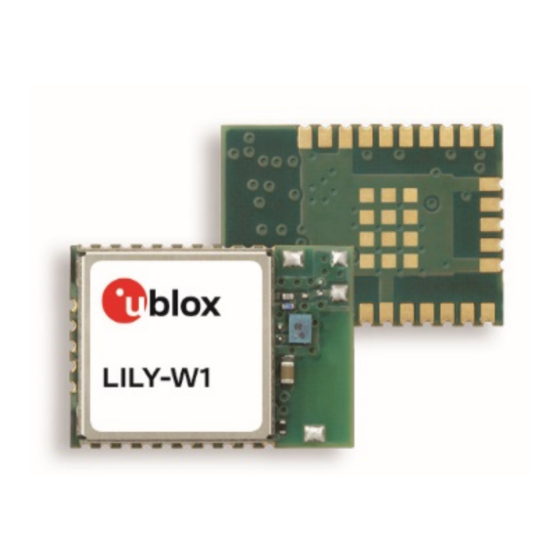
Table of Contents
Advertisement
Quick Links
LILY-W1 series
Host-based Wi-Fi modules
System integration manual
Abstract
This document describes LILY-W1 series short range Wi-Fi front end modules. These host-based
modules are ultra-compact cost efficient IEEE 802.11b/g/n Wi-Fi front end modules in the LILY form
factor. This module series includes variants with or without internal antenna and LTE filter. It
includes an integrated MAC/Baseband processor and RF front end components. It can connect to a
host through its SDIO or USB interface.
www.u-blox.com
UBX-15027600 - R09
Advertisement
Table of Contents



Need help?
Do you have a question about the LILY-W1 Series and is the answer not in the manual?
Questions and answers